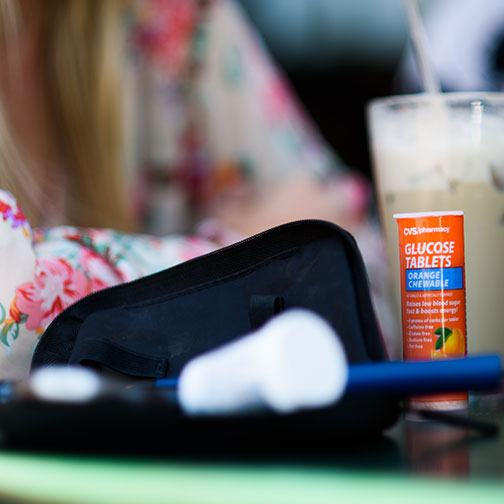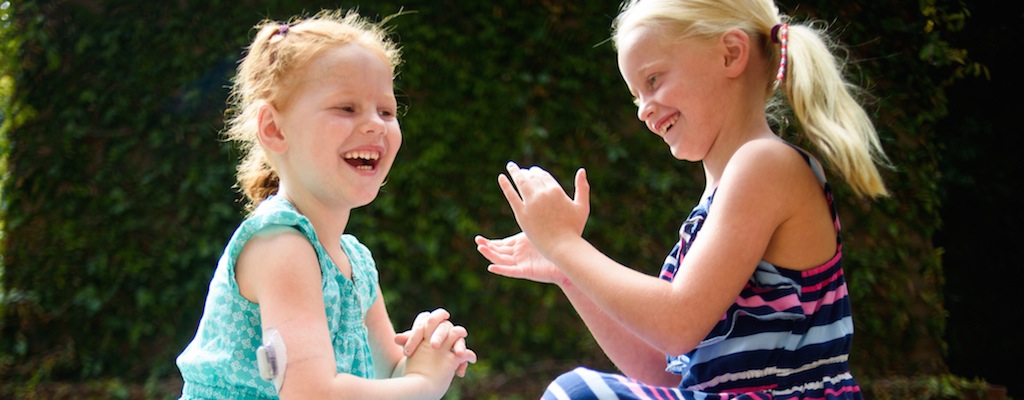Elementary/Primary School with Type 1 Diabetes
Sending a child with diabetes off to school can be one of the more anxiety-filled situations a parent or caregiver will face. The school day presents several hours where you must entrust your child’s physical, emotional and intellectual well-being to others who may know little about type 1 diabetes. It is up to you to educate them, and we’ve got all the tools to help you! You could say, it’s as easy as A, B, C…
Alert
Alert your school that your child has type 1 diabetes and ask to set up a meeting where you can discuss your Diabetes Medical Management Program (DMMP).
Build
- Build your Diabetes Medical Management Program (DMMP—download a sample here) with your doctor that details your child’s diabetes management and verifies care needs. This document should include the following:
- Target blood sugar range and whether your child needs help checking their blood sugar
- Your child’s specific hypoglycemia (low blood sugar, or “low”) symptoms and how to treat hypoglycemia (consider printing out and using this “how to help me with a low” sheet for school staff, bus drivers, coaches, after-school-care staff, etc)
- Insulin or other medication used
- Meal and snack plans, including for special events
- How to manage physical activity/sports
- Create your health care and learning plan with the school. In public schools in the US, a 504 plan is often used and is a good base.
- Include your Diabetic Alert Dog (DAD) forms if applicable.
- Create a “low box” and include extra diabetes supplies
Remember that students with type 1 diabetes (T1D) are legally entitled to accommodations that allow for full T1D management while in the classroom, but parents need to work with educators to ensure their child’s health and education needs are being met. See what resources are available and useful to you and your student!
Communicate
Communicate with administrators, teachers and the school nurse, showing them your DMMP and 504 Plan. Establish expectations of care at this time. You may want to discuss setting up a time to do a classroom or school presentation to help educate others at the school on type 1 diabetes.
The more open a relationship you have with your school, the more comfortable you will feel. Everyone who supervises your child, from the playground attendant to the bus driver, should be in the loop. At times, it will be up to you to explain the ins and outs of T1D to education professionals. It’s a good idea to provide emergency supplies (such as juice boxes and glucose tabs) so that each of these people have them at all times.
If your school has never had a student with T1D, consider providing them with additional resources so they can better educate themselves. Several guides available below.
Download a School Presentation of Teaching Type 1 to Others.
Deliver
Deliver supplies such as a “low box” and any other diabetes management tools your child will need throughout the day.
It is ideal to set this up BEFORE school begins, as the start of school is hectic. You want to make sure that all is set in place and there are no delays in your child starting school.
Download a sample letter to administers + teachers + school staff in English or Spanish.
Additional Resources
Explore ADA’s Safe at School Campaign that ensures the diabetes management needs of students are met.
For citizens of India, under Right To Education (RTE), elementary education is the basic right of all children aged between 6 to 14 years of age, including disabled children. Schools or educational institutions found to be violating this norm can lose government certification/recognition. Contact Diabetes India Youth in Action (DIYA) if you feel that your rights have been violated.
This is part of our School Resources series. Click here for other grade levels, stories, downloadables and content.
Resources
Stories






























